Switch to the mobile version of this page.
Vermont's Independent Voice
- News
- Arts+Culture
- Home+Design
- Food
- Cannabis
- Music
- On Screen
- Events
- Jobs
- Obituaries
- Classifieds
- Personals
Browse News
Departments
Browse Arts + Culture
View All
local resources
Browse Food + Drink
View All
Browse Cannabis
View All
-
Business

Cannabis Company Could Lose License for Using…
-
Culture

'Cannasations' Podcaster Kris Brown Aims to 'Humanize'…
-
True 802

A Burlington Cannabis Shop Plans to Host…
-
Business

Judge Tosses Burlington Cannabiz Owner's Lawsuit
-
Health + Fitness

Vermont's Cannabis Nurse Hotline Answers Health Questions…
Browse Music
View All
Browse On Screen
Browse Events
Browse Classifieds
Browse Personals
-

If you're looking for "I Spys," dating or LTRs, this is your scene.
View Profiles
Special Reports
Pubs+More
Moving on From Its Industrial Past, St. Johnsbury Is Attracting Young Entrepreneurs and Building a Vibrant Downtown
St. Johnsbury, Vermont is experiencing a revitalization. The town now offers good schools and easy access to nature, as well as arts and culture institutions.
Published July 17, 2024 at 10:00 a.m. | Updated July 24, 2024 at 10:11 a.m.
Help us pay for in-depth stories like this one by becoming a Seven Days Super Reader.
On a recent summer evening, a group of twentysomethings relaxed and chatted in front of Haven, a curated vintage furniture store in downtown St. Johnsbury. Inside, a New York City-based tattoo artist sold screen prints and scheduled inking appointments among trays of charcuterie and glasses of organic wine.
Next door at St J Spins, a two-year-old record store, a bearded man spun vinyl as people browsed. The sound of upbeat house music reached the crowd gathering outside at a farm-to-table food truck called O'Crépe.
If it weren't for the Green Mountains in the distance, the street scene could have been set in Brooklyn or any number of hip American neighborhoods.
It wasn't a typical Friday in St. Johnsbury, a Northeast Kingdom town of 7,400 once known more for manufacturing than trendy shops. It was a Final Friday, the street fair held on the last Friday of each summer month. More than 800 people rambled along Railroad Street, the town's main drag. The block is closed to cars on these special evenings, inviting a crowd of pedestrians to enjoy food, performances and public art.
Matt and Irene Murphy, a young couple pushing a stroller, waited in line in front of a food tent for a dinner of gyros. The Murphys had moved from Alaska a month earlier after considering dozens of Northeast communities. St. Johnsbury stood out.
Matt explained: The town offers good schools and easy access to nature, as well as institutions of arts and culture including the St. Johnsbury Athenaeum, the Fairbanks Museum & Planetarium and Catamount Arts. Plus, things seemed to be happening in St. J.
"This was what we were looking for when we moved," he said, gesturing at the lively scene around him.
The St. Johnsbury that drew the Murphy family is a newly revived community. Just 10 years ago, so many downtown storefronts were empty that a local group filled the windows with art to make Railroad Street less depressing. Many young people left town as soon as they were grown.
"What I remember was this sense that there was something wrong with St. Johnsbury," said Gillian Sewake, who grew up in the town. She's the director of Discover St. Johnsbury, a promotional organization.
Efforts such as Final Fridays have helped the town recover from a slide that commenced decades ago with the decline of local manufacturing. In recent years, the town has succeeded in adding businesses and jobs in the tourist, retail and service economies. The downtown core, once bypassed by shoppers and tourists, has sprouted new stores and restaurants. Outside downtown, manufacturing employment has stabilized at a modest level, and several building projects — including a $14 million senior housing complex — are under way or scheduled to start soon.
St. Johnsbury still grapples with the challenges that face urban communities in Vermont and around the country: dangerous street drugs, rising homelessness and housing costs. The town's first permanent homeless shelter opened recently. Some residents worry revitalization will quickly slip into gentrification, and those who have lived and worked in St. Johnsbury for decades will be priced out. Others say that it's premature to slap a success sticker on a town where some residents are still struggling and some businesses are closing.
Nevertheless, the revitalization that began a decade ago has given investors confidence to put time and money into St. Johnsbury. Ambitious young entrepreneurs have started businesses such as Haven and St J Spins. While several downtown buildings remain vacant, the streets are busy and town pride is high.
"It's a huge moment for St. Johnsbury," said Jody Fried, the director of Catamount Arts, a 49-year-old nonprofit that bought three neighboring buildings in May. "There is just so much going on."
From Bread to Botox
A walk down Railroad Street reveals St. J's transformation-in-progress.
Since the start of the pandemic, the town has welcomed a net of 34 new businesses, employing more than 110 people, according to Discover St. Johnsbury. Boule, a French-style bakery, has become a hot spot since opening in 2021. Its owners, Darrell and Katey McLaughlin, just launched Birches, an upscale eatery, in the former home of Kingdom Table. It's next door to Whirligig Brewing, a "nano-brewery" and taproom owned by Geoffrey Sewake, the spouse of Discover St. Johnsbury's Gillian Sewake.
And just last month Haven's owner, Maggie Gray, and her partner, Gavin Wynkoop-Fischer, opened the Buttery, an espresso and natural wine bar and market. They share an entry hall with Art & Joy, a whimsical gift store owned by local artist and entrepreneur Alison Bergman.
"St. Johnsbury now has a Botox clinic," Gillian Sewake said, sounding almost incredulous. "You have to have disposable income in order for that to make sense for you and your lifestyle."
The businesses form a symbiotic ecosystem: The Buttery stocks bread from Boule; Whirligig has its merchandise printed at Magic Wolf, a local printmaking studio.
Rep. Scott Beck (R-St. Johnsbury) and his wife, Joelle, opened their downtown bookstore, Boxcar & Caboose, in 2005. Business was slow at first, Beck said, especially after the last downtown restaurant that served dinner closed its doors.
"We were blocked off from the shop-and-dine crowd," he said. Now, he said, you can see eight restaurants from his store.
Discover St. Johnsbury has logged an uptick in tourism, with 3,480 out-of-towners visiting its headquarters in 2023, about 1,000 more people than in 2022. This year's total solar eclipse, and the planetarium's programming, drew thousands. Since 2019, Fairbanks Museum membership has increased from 750 to 1,245 — a two-thirds spike.
Three miles from downtown, Dog Mountain draws 30,000 visitors a year to the late Stephen Huneck's famous gallery of canine-themed art and his dog chapel, where the walls are plastered with visitors' handwritten remembrances of lost pets. A summer concert series draws crowds of humans and canines. Dog Mountain visits are up about 30 percent from pre-pandemic years, according to executive director Ali Ide.
Local institutions such as Catamount Arts and the Fairbanks Museum are taking advantage of the moment. The latter recently completed a 6,000-square-foot annex, the largest expansion since its 1889 founding. Catamount, which closed its offices, theater and performance space for a year after the discovery of environmental contamination, reopened in June with a parade and celebration. The organization plans to use its recently purchased neighboring buildings to house artist studios and businesses.
This fall, construction will likely begin on a 10,500-square-foot food co-op, which already has more than 1,000 members.
"It feels like St. Johnsbury is making an upwards trajectory," Geoffrey Sewake, the Whirligig owner, said. "Even though we lose some businesses, we gain others."
Weigh-Back Machine
The foundation for St. Johnsbury's downtown renaissance was laid 200 years ago when a local man, Thaddeus Fairbanks, invented a more accurate platform scale that was embraced by 19th-century manufacturers. The company he founded with his brother Erastus became Fairbanks Scales, which, for a time, was the largest scale manufacturer in the world.
At its peak in the 1960s, Fairbanks-Whitney, as the company was known at that time, employed about 2,600 people. Many of St. Johnsbury's gracious 19th-century homes were built for the company's managers.
The family was generous and public-spirited. Erastus' son, Horace, who served as governor of Vermont, built the 1871 Athenaeum, a striking French Empire-style building, to serve as St. Johnsbury's public library. It holds about 100 works of art collected by the family, the largest of which is Albert Bierstadt's wall-size "The Domes of the Yosemite." The Fairbanks Museum & Planetarium was the work of Horace's brother, Franklin. The 1889 red stone museum houses Franklin's collections of natural history specimens, including an immense stuffed moose. The planetarium was added in the 1960s, and its new $7 million science annex will highlight meteorology and astronomy.
The Fairbanks family also founded St. Johnsbury Academy, in 1842. Today, with more than 900 students, the downtown complex functions as the local high school for 40 nearby towns, and as a boarding school that draws students from around the world.
In the 20th century, ownership of Fairbanks Scales changed a number of times. In 1975, the company moved most of its manufacturing operations to Kentucky and Mississippi, leaving just a remnant of its operation in St. Johnsbury.
The blow was acute.
"Most of the '70s and the '80s was about reimagining the workforce around here," said Beck, who lived in St. J as a youth but moved around the country because of his father's career in the U.S. Navy. "I remember as a kid coming back here for summer vacations, and you could see a lot of stress, a lot of unemployment."
St. Johnsbury once served as the region's shopping destination. But competition from malls, big-box stores and eventually online shopping outlets hollowed out the retail scene. Hovey's, an anchor department store that opened in 1939, shut its doors in 1996.
"That was probably the low point," Beck said. "When they closed up, you had massive amounts of retail space unoccupied. We had no general merchandiser."
Malaise took hold. A decade ago, 70 percent of the town's storefronts were empty, according to Steve Isham, chair of the St. Johnsbury Selectboard. He grew up in town but left for a career as a research data analyst. After retiring, he moved back in 2017.
"It was a really great community to grow up in," Isham said. "The downtown was busy. And then when I would come home to visit my family, I would notice how shops were closing."
Imagine Flagons
click to enlarge 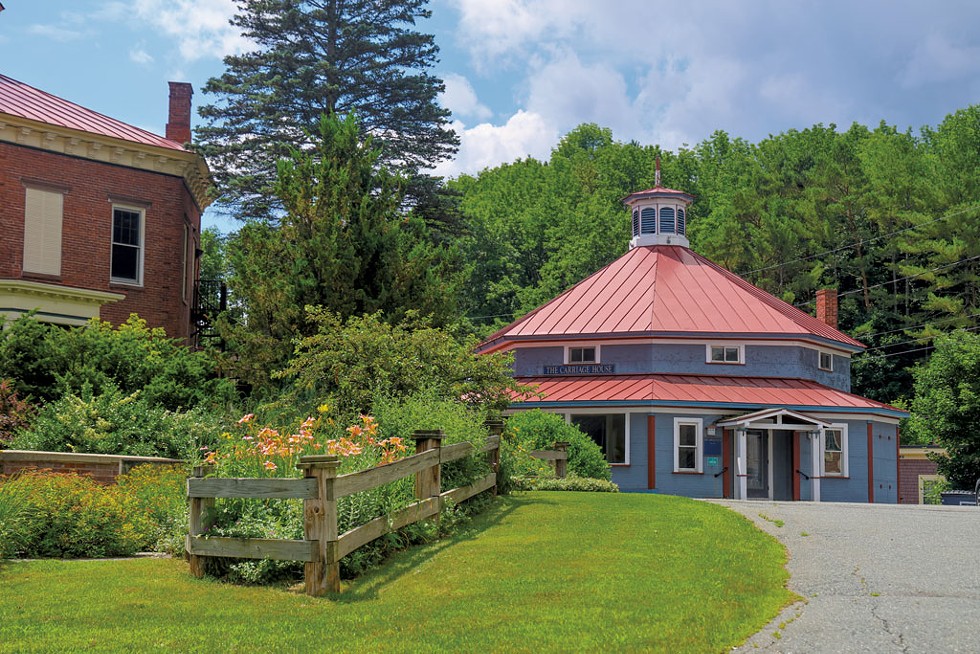

- Steve Legge
- A building purchased by Catamounts Arts that will house art studios and businesses
Isham thinks things started looking up in downtown St. Johnsbury about 10 years ago. That's when the Vermont Council on Rural Development held a gathering to talk about the town's future. More than 250 people showed up, former VCRD executive director Paul Costello said.
"Some towns have a hunger to think about their future," Costello said. "St. Johnsbury was one of them."
Attendees agreed that St. Johnsbury needed to be more open to change. After a protracted battle over whether to permit the construction of a Walmart — which later went to Littleton, N.H., 20 miles east — and the Hovey's closing, some in town had started to feel hopeless, Beck said.
"The sentiment was almost a philosophy of retrenchment," he said. "It was protective: Let's not do anything because everything was going in the wrong direction."
The selectboard was so averse to change that Rep. Scott Campbell (D-St. Johnsbury) nicknamed it "the Tea Party."
In 2015, St. Johnsbury hired a new town manager, Chad Whitehead, and an assistant town manager, Joe Kasprzak. The two started looking for ways to strengthen the downtown. The selectboard was also changing.
After some bumpy years of rapid turnover and discord, "We started to get selectboard members who also had the foresight to see that we must make investments in order to grow and become a vibrant community," Isham said.
One of those investments was the revival of the town's once-grand New Avenue, an 1898 hotel that occupies nearly a full square block at St. Johnsbury's most prominent downtown corner, Depot Square. Its Massachusetts owner had converted the building to apartments. Its street-level retail spaces had been vacant and boarded up for nearly a decade.
"Walking by, it smelled like mildew," said Patrick Shattuck, executive director of RuralEdge, the Northeast Kingdom's affordable housing agency.
At the meetings convened by the VCRD, "every other comment was, 'We've got to do something about Depot Square,'" said Jamie Murphy, a St. Johnsbury native and lawyer who moved back in 2012 with his wife and children. "You had squatters living there. Nobody wanted to invest in St. Johnsbury when that was the biggest building on the most prominent corner."
Working with local housing agencies, nonprofit groups and Sen. Jane Kitchel (D-Caledonia) — chair of the Senate Appropriations Committee — town officials secured local, state and federal money to renovate the hotel. The $17 million project created 40 affordable apartments and refurbished retail spaces that are fully leased. The grand, restored façade of the hotel inspired confidence when it was badly needed, Isham said.
"For me, that's when all of a sudden we started to be positive," he said.
Another key to the turnaround was the 2014 opening of Kingdom Taproom. Seventeen acquaintances, some new to town, had been looking for a way to revive downtown — and they also needed a place to get a beer, according to Jamie Murphy, who was part of the group. "There was nothing that really stayed open past 5 o'clock at night," he said.
The group bought the building next to New Avenue and started serving drinks. "It took a few years, but through some blind luck, it started making money," Murphy said.
Many people in town credit the opening of the Taproom with inspiring the confidence that other investors needed.
During the pandemic, St. J received $2.1 million in federal recovery funds. Officials decided to distribute that money through small grants for projects that would help revitalize the town. Earlier this year, St. Johnsbury awarded amounts of $2,500 to $200,000 for early-stage work on housing projects and other initiatives.
"We treated the [American Rescue Plan Act] money as investments," Isham said. "We didn't treat it as found money and do one-off things."
Patrick Shattuck said that spirit of cooperation is the reason St. Johnsbury was able to open its first permanent homeless shelter in January. Several groups worked together to buy a large home, previously used as a church and a tae kwon do studio, and convert it quickly to offer 20 beds for adults. It's located 500 feet from the office of Northeast Kingdom Human Services, Shattuck said, and "serves a dire need."
The same spirit of cooperation is evident to Shattuck as Kasprzak and others look for ways to build market-rate housing. Through a partnership with the Northern Forest Center and public and private funders, a former rooming house on Railroad Street is being converted into nine apartments and two commercial spaces. The town is helping investors line up financing for two other housing developments. Local employers say finding housing is a major challenge for their workers, many of whom make too much to qualify for subsidized housing.
Before the pandemic, different studies measured the economic impacts of outdoor recreation and the arts in the region. Kingdom Trails in nearby Burke estimated its economic impact at $10 million a year. A 2018 study from the Vermont Arts Council said the creative economy represented 9 percent of the workforce in the Northeast Kingdom.
"That made us pay attention and make sure the creative sector is at the table," Kasprzak said.
Help us pay for in-depth stories like this one by becoming a Seven Days Super Reader.
Image Makeover
Leaders say St. Johnsbury had another problem a decade ago: public perception.
"People were telling me, 'This town is going to hell,'" Gillian Sewake said. "That was the feeling at the time."
And yet, during the VCRD's 2015 visit, residents were able to identify a plethora of assets: a hospital, a creative economy, beautiful architecture, a world-class museum and library. Thanks to the Fairbanks, St. Johnsbury had the bones of a thriving town. Now all it needed was for residents to believe that.
Catamount Arts' Fried and Anna Rubin, director of external relations for the Fairbanks Museum, cochaired a committee charged with promoting a positive town image. With no budget and only volunteer help, the two got to work reimagining St. Johnsbury's identity. They created a map for tourists and helped the local artisans' guild become an official state attraction.
As momentum grew, the volunteer group merged with what became Discover St. Johnsbury. In 2020, Sewake became the organization's director and first full-time staff member.
It was Sewake who came up with the Final Fridays series, inspired by a similar event series in Littleton, N.H. An arts focus emerged after Maggie Gray, the owner of Haven, reminisced about the gallery strolls she once enjoyed in Salt Lake City. Sewake decided to try something similar that everybody could appreciate.
"I wanted to make sure that the people who ... might live in subsidized housing can come and enjoy all of the same things that you would find in an arts and culture festival in a major city, which isn't often the case," Sewake said.
Sewake has also helped create events that reimagine St. Johnsbury's Passumpsic River riverfront, an industrial area with a reputation for attracting crime. In 2020, the town opened a 650-square-foot pavilion there, and on a recent Tuesday, families trickled in to attend a food truck pop-up.
One mother-daughter pair, Margrette Domingue and Robin Bassett, slurped their noodle bowls under a tent. The two moved to St. Johnsbury after their Barre apartment was destroyed during last summer's catastrophic flooding.
"The reputation of St. J used to be kind of down in the dumps, kind of like Barre," Bassett said with a laugh. "But it's clearly shifted. There's things like this, and there's a really nice farmers market. We love it here."
'A New Generation'
Maggie Gray moved to St. Johnsbury in 2020, mostly to take advantage of the affordable housing in the area. She didn't know much about the town. While working as a paraeducator, Gray started selling refurbished midcentury-modern furniture out of her garage.
Sewake, who had just assumed her role as director of Discover St. Johnsbury, took notice. She encouraged Gray to start a brick-and-mortar business and arranged for her to tour a vacant storefront on Eastern Avenue. Gray was hesitant but recognized the opportune timing — the chance to get in early on a good thing.
"I understand the way revitalization slowly becomes gentrification," Gray said.
Gray opened Haven in 2021, and now she's attracting clients from New York City and Boston who travel to St. Johnsbury to snag items she posts on Instagram.
"I don't sell any new vintage inventory online until it's been in the store for at least a week," Gray said. "I don't want to have a cheap storefront. I want to prioritize my community first."
Haven is doing so well that Gray and her partner, Gavin Wynkoop-Fischer, opened a second enterprise, the Buttery, just a few doors down. They did it by raising $30,000 through a Kickstarter campaign.
At the Buttery's grand opening last month, flocks of people — couples in their thirties and families with young children — enthusiastically greeted Gray at the door. Gray and Wynkoop-Fischer are among the new residents who have been key to St. Johnsbury's recent success, some residents say.
"A new generation — a younger, more diverse generation — have stepped forward within the last 10 years to begin the change of the town," observed Jay Craven, the film director who founded Catamount Arts in 1975. Many of these newcomers moved — or returned — to St. Johnsbury during the pandemic.
One of the biggest draws for budding entrepreneurs is the way town officials are willing to work with business owners, Isham said. In his three years on the selectboard, "No liquor or tobacco or pot license has been refused," Isham said. (The town has two cannabis stores.) That willingness sends a message.
Cloe Ashton, a young illustrator, relocated to St. Johnsbury from Oregon in 2022, after a bad season of wildfires. St. Johnsbury stood out for its commitment to the arts, as well as its elevation — safer from flooding. Last week, St. Johnsbury's downtown was mostly untouched by flooding that inundated surrounding areas. Some businesses and residences on Memorial Drive were hit, and Dog Mountain reported damage to trails, roads and a pond where dogs swim. But the downtown stayed dry.
Ashton, 40, and her partner are now homeowners. Ashton has been especially satisfied with the creative community in St. Johnsbury.
"I was interested in being at the ground floor of something," she said.
She quickly befriended Alison Bergman, owner of Art & Joy, the eccentric gift store. The two, with additional collaborators, plan to start an arts collective with rentable studio space, a printmaking studio, a woodshop and a darkroom.
"I'm confident that once we get the studios up and running, we're going to have more artists than we have capacity for," Bergman said.
Left Out?
Ashton, the illustrator, has urged friends to relocate to St. Johnsbury from the West Coast. But none could find housing, so they passed.
Like many towns, St. Johnsbury hasn't had much new home construction over the past several decades. But compared with other parts of Vermont, housing remains cheap.
The median home price in St. Johnsbury is just $195,000, far below the statewide figure of $309,000, according to the Vermont Housing Finance Agency. Rents are more modest, too — $825 in St. Johnsbury compared to $1,070 statewide. But the town's median household income lags, VHFA said, at just $43,190 — well under the $67,674 Vermont median.
Some residents wonder whether St. Johnsbury's downtown growth will make the town less affordable for longtime residents.
"One of the comments that came up when fundraising for the [food] co-op was: Is this going to be elitist? Is this going to price out people?" Craven said. "And that's a very important question."
Other residents deny that St. Johnsbury is being revitalized at all. They point to an increase in the number of unhoused people and drug users who loiter downtown, especially around the welcome center. Last month, the selectboard established a public safety task force to address these challenges.
"I'm embarrassed by what visitors see here," resident Jean Wright said. "The drugs, the homelessness. It's very frustrating."
Some grassroots efforts have popped up to help those left behind. Craven and Campbell are starting a nonprofit called Kingdom Community Roots, an offshoot of the co-op, to increase access to food, recreation and the arts.
Building a Future
With 650 employees, Northern Vermont Regional Hospital is St. Johnsbury's largest employer. In January the selectboard approved a $100,000 grant to help it build homes on 80 acres the hospital owns near downtown. Hospital CEO Shawn Tester often cites the housing shortage as his primary obstacle to recruiting staff.
Kasprzak suggested a reporter should ask Tester if he ever had imagined being involved in housing and economic development. "It's a new era," Kasprzak said.
To attract and keep jobs that pay well, the town is supporting such local housing projects. It gave the St. Johnsbury Development Fund $200,000 to buy and demolish the former Maple Center Motel to use the site for middle-income housing. The town hopes to help a private developer build more such housing on a 7.8-acre former factory site.
RuralEdge, the affordable housing agency, has applied for local permits to build 26 senior apartments downtown where three buildings burned down in 2009. Across the street is a long-vacant armory that the town plans to turn into a police station and regional emergency management training center, using $11 million in state and federal funding.
Local economic development groups have worked hard to reestablish the manufacturing base that St. Johnsbury lost when Fairbanks Scales left town. A few miles north of downtown, about 1,700 people work in a small industrial park and in a cluster of factories such as Lyndon Furniture, Québec-based BHS Composites and German-owned Weidmann Electrical Technology, where a "hiring now" sign stands.
"The rest of the world is sending in a lot of money into this area, and it shows up in wages and benefits," Beck said on a driving tour of the industrial area.
Where It's Happening
Those wages fund a dynamic downtown. That is to say: Change is an elemental part of it. The hardware dealer R.K. Miles is preparing to move from downtown to a much larger spot three miles away in the Green Mountain Mall. On July 7, the Taproom, credited with sparking rejuvenation, announced that it's closing — at least until another operator can be found.
Cofounder Jamie Murphy said it was difficult for the owners, who have day jobs, to focus on their side business.
"Nobody wanted to operate a restaurant," he said. "At a certain point, we just didn't have the same energy to put into it. It's sad, but it's time, I think, for some new energy to get involved."
The loss is a significant blow but not a crushing one. In the past, he said, when a business failed, "Everyone threw up their arms and said, 'That can't work here.'" Now, he said, the town's leaders are more comfortable with the idea that businesses will always come and go.
Kasprzak sees huge potential in extending into downtown the 93-mile Lamoille Valley Rail Trail, which runs between Swanton and the outskirts of St. Johnsbury. An area occupied by 19th-century structures that were used to store and ship agricultural products could become a riverside dining and shopping area for cyclists who take the trail into town.
This fall, construction will likely begin on the 12,000-square-foot Caledonia Food Co-op that has been years in the making. The 500 or so members hope it will become a central space to market local produce and hold community events. Last month, they hosted their first — a strawberry festival — in the parking lot. According to Craven, who is on the co-op board, more than a thousand people came.
On a recent weekday, Railroad Street teemed with visitors. Families ran errands as afternoon traffic started to build. A young couple headed inside the Buttery, which was celebrating its first day in business.
Evan Carlson, a thirtysomething who moved back to the Northeast Kingdom from New York City a few years ago, sat at the bar, chatting with Gray. Carlson founded a coworking space, Do North, in Lyndonville in 2018.
For years, Carlson dedicated his energy to nearby Lyndonville's revitalization — investing in businesses and involving himself in politics. But recently, he has found himself pouring that energy and money into St. Johnsbury, where he is buying a downtown building.
As Carlson described it, Lyndonville's selectboard has been unwilling to consider new ideas. He loves being around changemakers in St. Johnsbury.
As he spoke, Bread and Puppet Theater performers paraded in front of the shop, celebrating the grand reopening of the Catamount Arts Center. Trombones sounded, and colorful flags streaked the sky.
"I feel like this is an ideal time to build on the momentum here," Carlson said.
Help us pay for in-depth stories like this one by becoming a Seven Days Super Reader.
The original print version of this article was headlined "Turnaround Town | Moving on from its industrial past, St. Johnsbury is attracting young entrepreneurs and building a vibrant downtown"
Got something to say?
Send a letter to the editor
and we'll publish your feedback in print!
About The Authors

Rachel Hellman
Bio:
Staff reporter Rachel Hellman covers Vermont towns for Seven Days. She is a 2020 graduate of Washington University in St. Louis, and her work has been published in the Guardian, the Boston Globe and Backpacker. Rachel is a corps member with Report for America, a national service program that places journalists into local newsrooms. Find out more at reportforamerica.org.
Staff reporter Rachel Hellman covers Vermont towns for Seven Days. She is a 2020 graduate of Washington University in St. Louis, and her work has been published in the Guardian, the Boston Globe and Backpacker. Rachel is a corps member with Report for America, a national service program that places journalists into local newsrooms. Find out more at reportforamerica.org.

Anne Wallace Allen
Bio:
Anne Wallace Allen covers breaking news and business stories for Seven Days. She was the editor at the Idaho Business Review and a reporter for VTDigger and the Associated Press in Montpelier.
Anne Wallace Allen covers breaking news and business stories for Seven Days. She was the editor at the Idaho Business Review and a reporter for VTDigger and the Associated Press in Montpelier.
Latest in Economy
Related Locations
-
Art & Joy
- 375 Railroad St., St.Johnsbury Northeast Kingdom VT 05819
- 44.41809;-72.01600
-
 802-684-0220
802-684-0220
- www.artandjoyinvermont.com
-
Birches
- 397 Railroad St., St. Johnsbury Northeast Kingdom VT 05819
- 44.41863;-72.01596
-
 802-424-1289
802-424-1289
- www.birchesvt.com…
-
Boule Bakery
- 462 Railroad St., St. Johnsbury Northeast Kingdom VT 05819
- 44.41917;-72.01529
-
 802-424-1029
802-424-1029
- boulebakery.com
-
Boxcar & Caboose
- 394 Railroad St., St. Johnsbury Northeast Kingdom VT 05819-1601
- 44.41828;-72.01548
-
 802-748-3551
802-748-3551
- www.boxcarandcaboose.com
-
Be the first to review this location!
-
The Buttery
- 379 Railroad St., St. Johnsbury Northeast Kingdom VT 05819
- 44.41816;-72.01598
- www.thebutteryvt.com…
-
Dog Mountain
- 143 Parks Rd., St. Johnsbury Northeast Kingdom VT 05819
- 44.43511;-71.98136
-
 800-449-2580
800-449-2580
- www.dogmt.com…
-
Fairbanks Museum & Planetarium
- 1302 Main St., St. Johnsbury Northeast Kingdom VT 05819
- 44.42005;-72.01985
-
 802-748-2372
802-748-2372
- www.fairbanksmuseum.org…
-
Haven
- 18 Eastern Ave., St. Johnsbury Northeast Kingdom VT 05819
- 44.41794;-72.01618
-
 802-424-1710
802-424-1710
- hhhaven.net
-
St J Spins
- 14 Eastern Ave., St. Johnsbury Northeast Kingdom VT 05819
- 44.41792;-72.01608
-
 802-345-6334
802-345-6334
- www.facebook.com…
-
St. Johnsbury Athenaeum
- 1171 Main St., St. Johnsbury Northeast Kingdom VT 05819
- 44.41838;-72.02148
-
 802-748-8291
802-748-8291
- www.stjathenaeum.org…
-
Be the first to review this location!
-
Whirligig Brewing
- 397 Railroad St., Suite 2, St. Johnsbury Northeast Kingdom VT 05819
- 44.41865;-72.01608
-
 802-417-2468
802-417-2468
- whirligigbrewing.square.site/
Related Stories
Speaking of...
-

Flood Insurance Gaps and Rising Risks Challenge Vermont Homeowners
Aug 14, 2024 -

Best museum
Jul 31, 2024 -

Crumbs: Restaurant Transitions in Chittenden County and St. Johnsbury
Jul 16, 2024 -

A Waterbury-Based Speech Pathologist Launched the Viral 'I'm Worth Listening To' Campaign
Jun 19, 2024 -

Catamount Arts Reopens in St. Johnsbury After a Yearlong Closure
Jun 19, 2024 - More »





























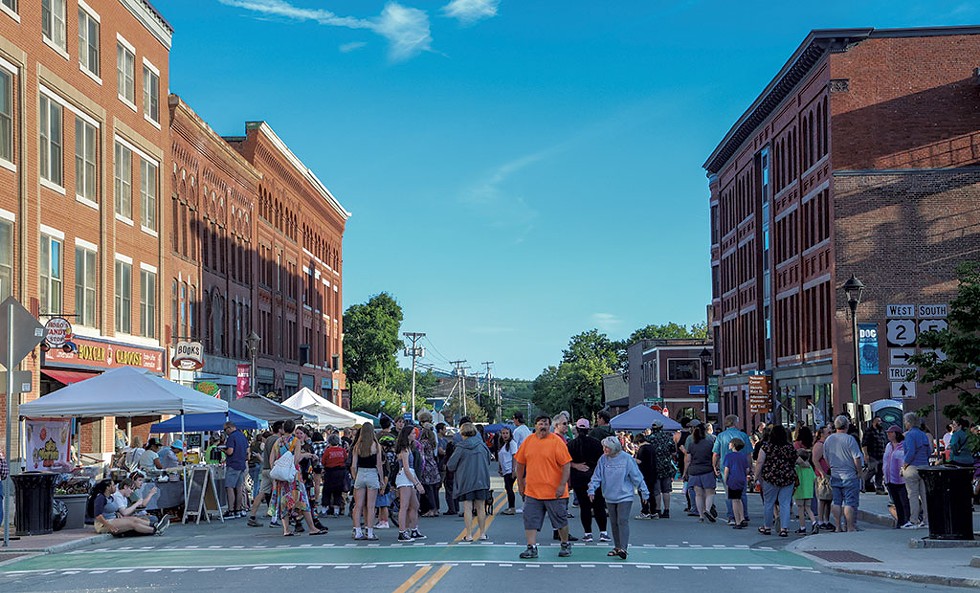
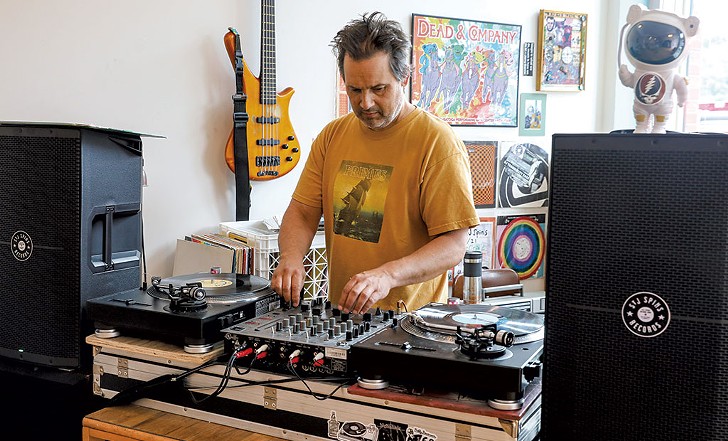
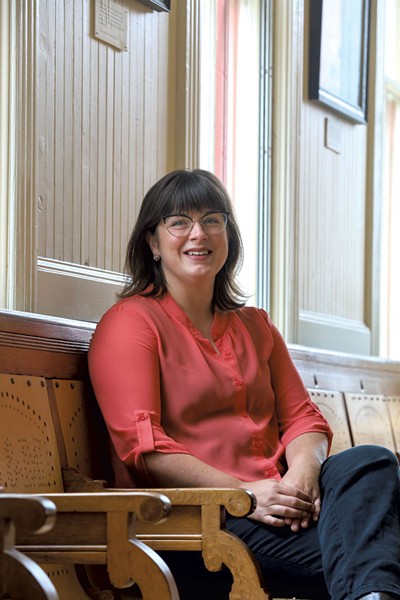
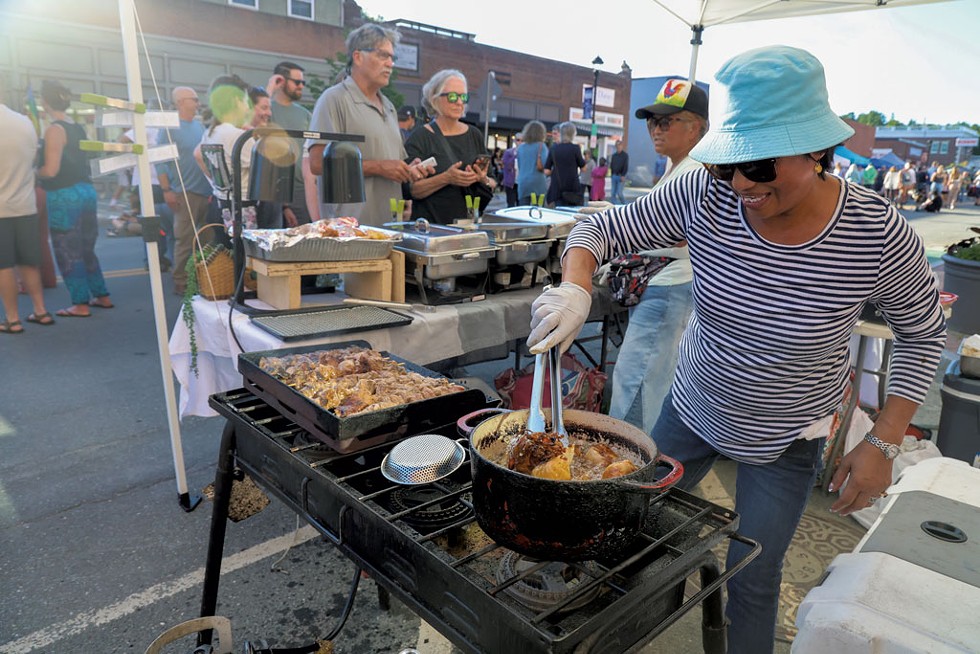
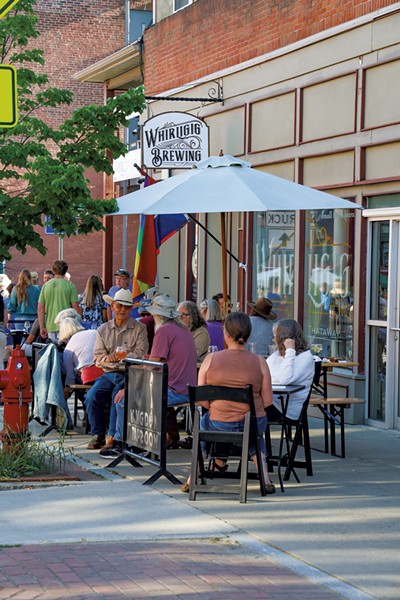
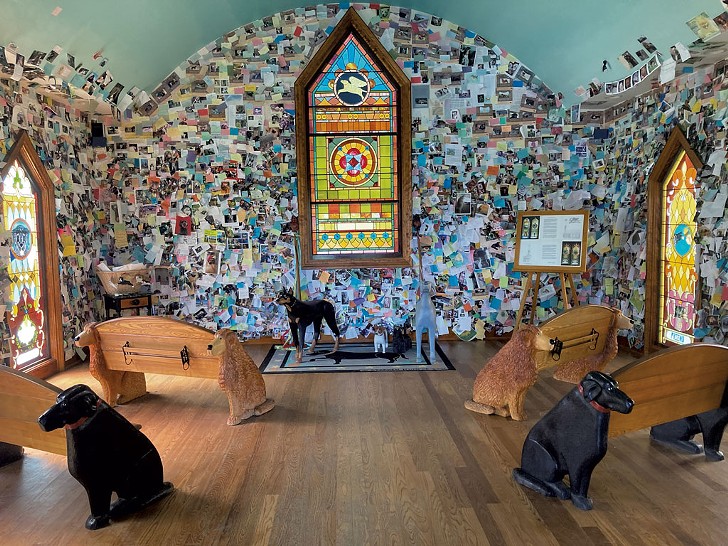
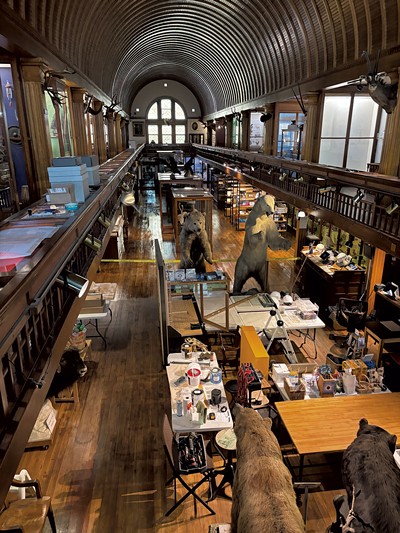
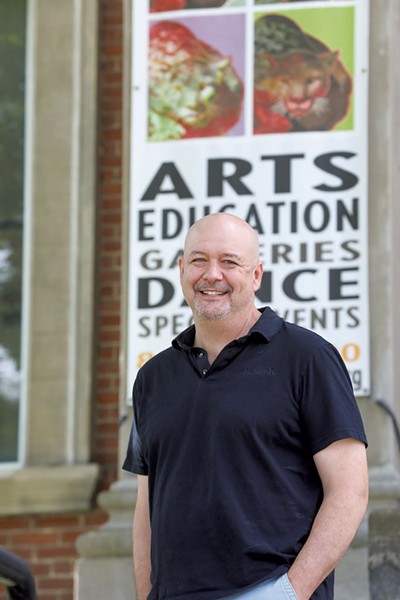
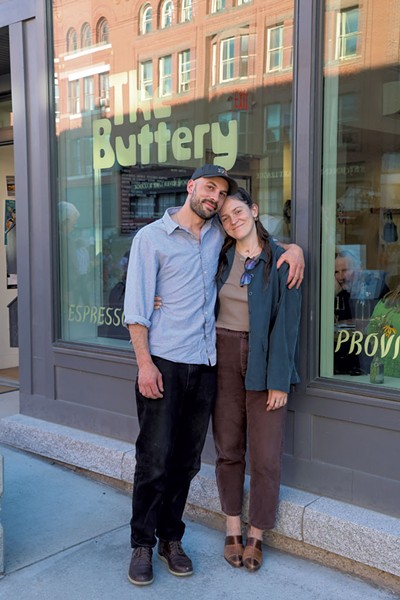
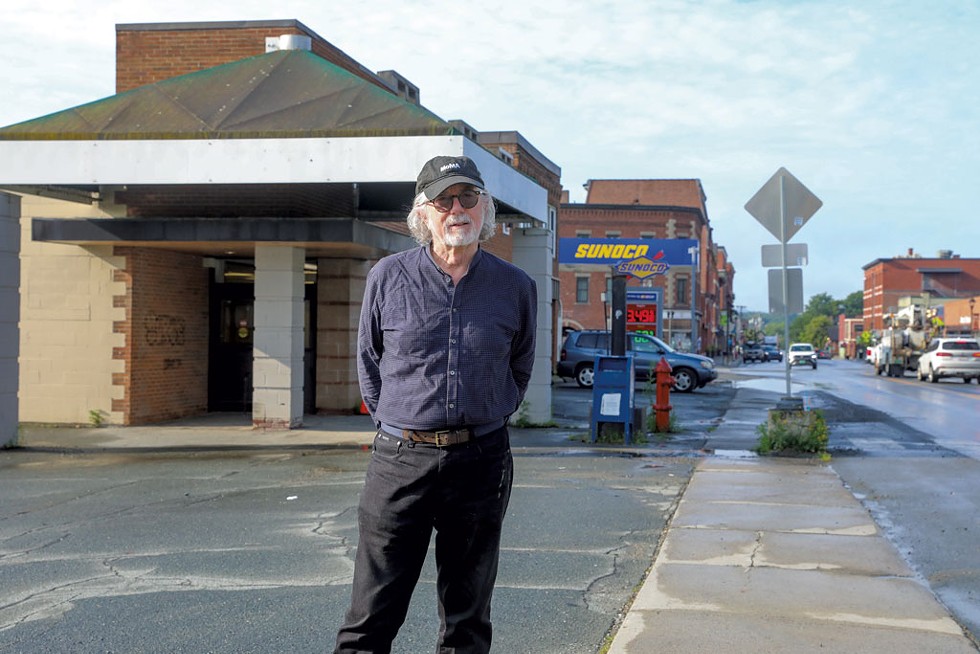

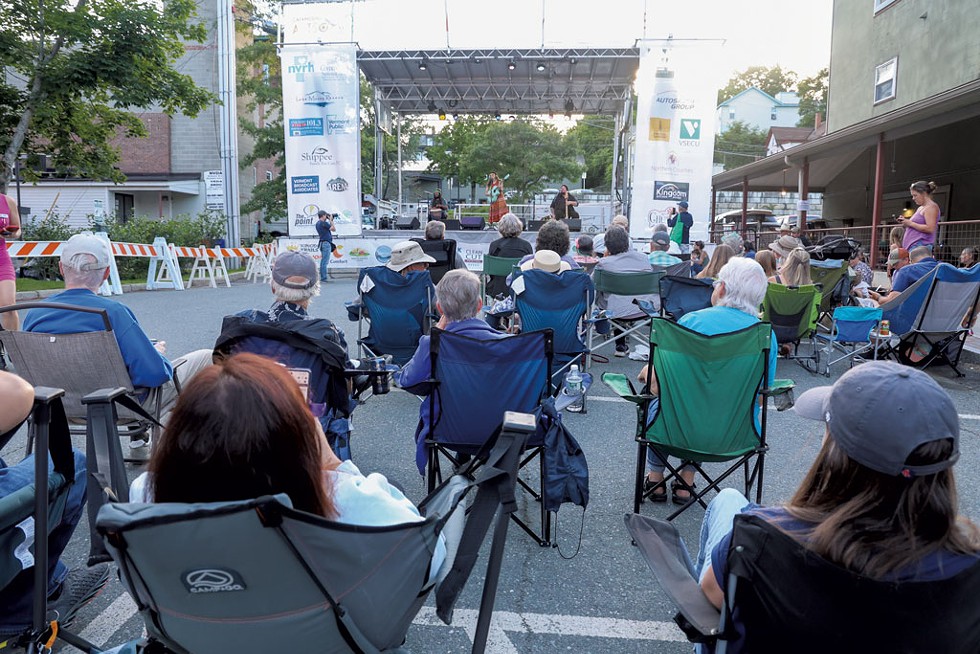
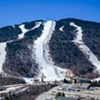
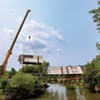



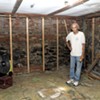









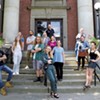




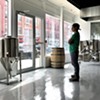

find, follow, fan us: